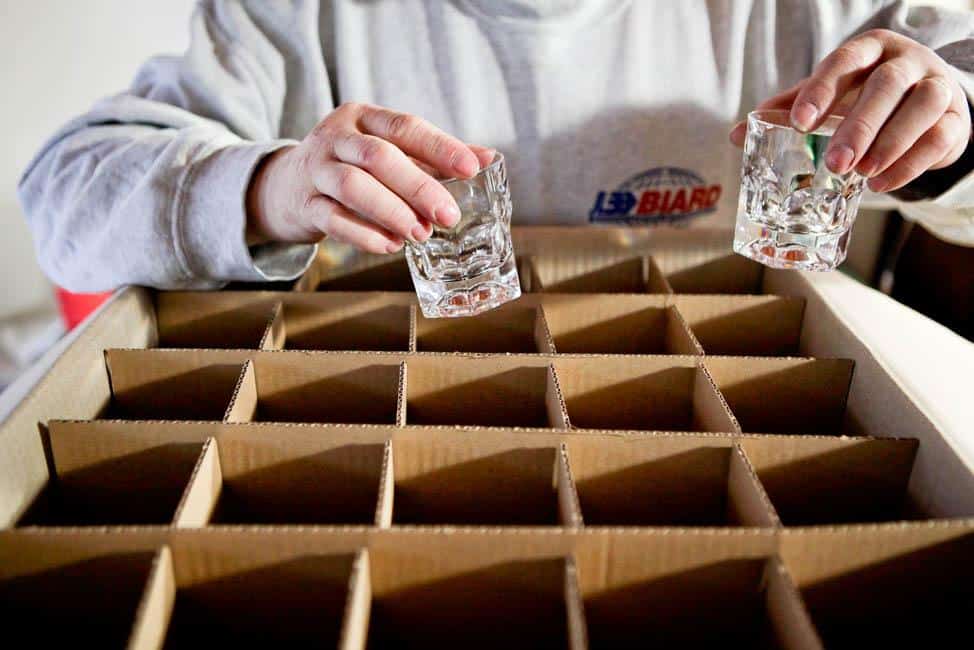Moving to a new place can sometimes be very exciting. But, the actual process of displacement is not so exciting. It’s stressful, exhausting, mentally draining and tedious. In other words, if you do it right. If you don’t do it right, you could get where you’re going, open your boxes and discover that you can now piece together the pieces of your life… Literally.
Moving usually requires reconstituting your life in a way. However, you don’t want to discover that you have to physically assemble the elements piece by piece as a puzzle.
Avoiding this might take a little more effort, but it will be worth it to avoid having to deal with broken items and damaged goods at the other end. You just need to know how to pack properly, so that doesn’t happen to you.
Below are tips for packing different types of household items so they don’t break and don’t suffer any damage during transport.
Don’t pack your tools first
We want to start by warning you not to pack your tools first. Many things in your home will need to be dismantled before moving so that they can be moved in the safest way. You’ll need a set of tools that will allow you to quickly disassemble the items.
One important thing to remember when doing this is to take all the material for specific furniture or other things you break and put them in separate containers with labels indicating what each set is going to. You’ll need things organized at the other end to be able to unpack and install your home as quickly as possible. You don’t want to get stuck without the screws and other parts that hold your furniture together because you didn’t take the time to be diligent about it.
Wrapping fragile objects
Make sure you get wrapping paper, foam paper or bubble wrap. Maybe even get all three. They are perfect for packing all your fragile items, such as dishes, frames, etc. We recommend that you do not use newsprint as the ink will sometimes be transferred to certain items and ruin them. Wrap fragile items without tightening them because making them too tight can break them anyway. Now let’s see some details.
Glasses
Glasses are known to break. Usually this is because they are not packaged properly. It’s not because people don’t pack them, it’s because they’re often wrong in the box.
Once you have packed the glasses, place them in the standing box. The lenses are not as strong when they are lying down, so they break much more easily in this position. Fill the box with glasses that are standing, then close the box with three strips of duct tape at the top and bottom. Do not use or leave metal staples in the box as they can damage your glasses. Then finish by clearly marking the box with the word fragile. You should also indicate which room the box should go to the new location.
Each breakable dish must be packed alone. There must also be enough barrier or padding between each one so that there are no clicking or hitting that could cause broken objects. Transportation trucks are pushed and bumped throughout the relocation journey, so you need to make sure your food is protected.
Pots and pans
Just because your pots and pans are made of metal doesn’t mean you can just throw them in a box and call it good. You may not need to wrap them in enough padding to prevent them from breaking, but you need to wrap them in at least one layer of something to prevent them from scratching. They have a way to get tinged or scratched by other objects or scratch.
Silverware
Don’t just throw your silverware in a random box. You can put the cutlery in small bouquets and wrap them. Then they can be safely placed in boxes. Do not place these items in boxes containing brittle and brittle parts. Silverware can be heavy and cause other things to break in the box if it frees itself from its packaging and gets pushed around.
Paintings and paintings
Paints that are made in oil-based colors should be packaged first with a transparent, non-acid film. Then you can wrap it again with bubble wrap or something like any of your other images in frames. From there, you’ll want to put it in an image area. Glue all sides of the box that can open, so that the image doesn’t end up slipping while moving.
Lamps and lampshades
For starters, don’t pack them together in the same box. The lamp feet should be wrapped in bubble wrap and placed in a padded box like paper in boots. If the lamps are small, you could probably put more than one in the box, but be sure to put enough padding between them and around.
The lampshades should only be wrapped in clean white paper. A box should not contain more than one lampshade. This is the best way to keep the shade clean and fit.
Don’t do puzzles
Don’t be forced to do puzzles when you arrive at your new home. Be organized and put things away properly, so that your items get where they go safely and in one piece

